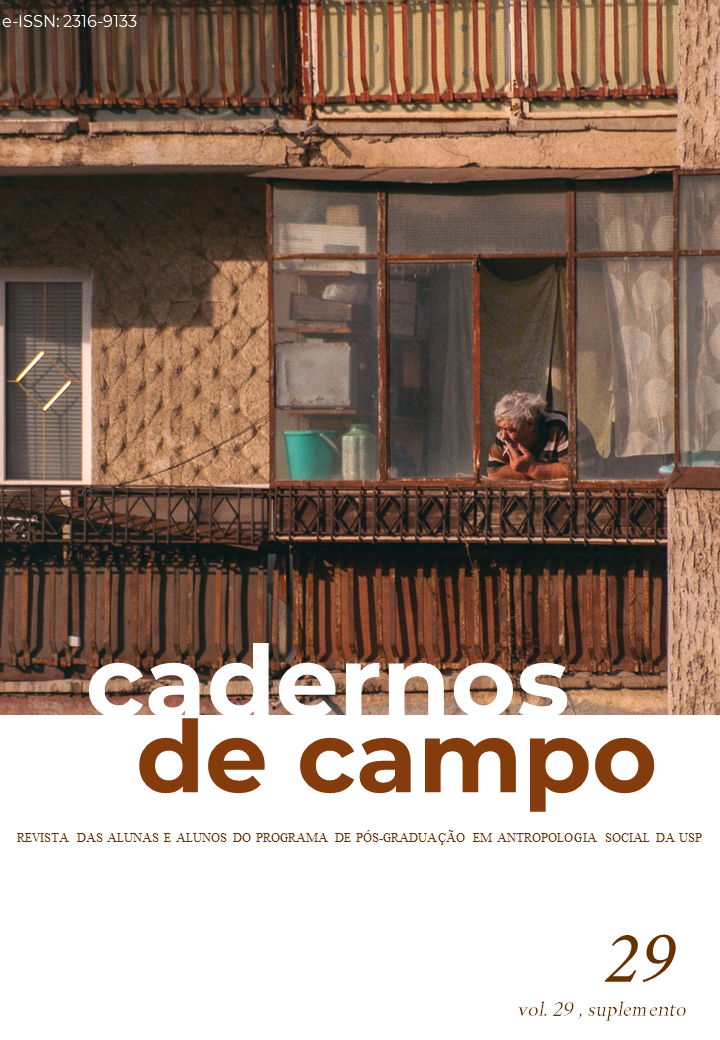Indigenous examples, the cov-cho and some tips against the end of the world
DOI:
https://doi.org/10.11606/issn.2316-9133.v29isuplp173-181Keywords:
indigenous thinking, covid-19, Qom People, Gran ChacoAbstract
The objective of this essay is to put into dialogue certain perspectives of the ends of the world narrated by the Qom indigenous people of the Gran Chaco Argentino and the events unfolding by the current Covid-19 pandemic. In order to ‘familiarize’ the virus, we will call it Covi-cho and place it in tension with the ‘models’ and the ‘examples’ that the anthropologist Viveiros de Castro proposed in a 2019 manuscript. As we will show, the ends of the world to the indigenous groups of Argentina have performed once and several times, at the rhythm of the creation of the modern nation. Despite this, they are still there, resisting in their accretions. In a context like the contemporary one, where the States are testing ‘models’ to protect the health of citizens, we will ask ourselves: can these indigenous ‘examples’ teach us something about the current global health crisis?
Downloads
References
CERIANI CERNADAS, Cesar; LAVAZZA, Hugo. (2013). “Fronteras, espacios y peligros en una misión evangélica indígena en el Chaco argentino (1935-1962)”. In: Boletín Americanista, vol. 2, n. 67, pp. 143-162.
FAUSTO, Carlos. (1999). “Of enemies and pets: warfare and shamanism in Amazonia”. In: American Ethnologist, vol. 26, n. 4, pp. 933-956.
LATOUR, Bruno. (2017). Cara a cara con el planeta. Una nueva mirada sobre el cambio climático alejada de las posiciones apocalípticas. Ciudad Autónoma de Buenos Aires: Siglo XXI.
LÉVI-STRAUSS, Claude. (1964). El pensamiento salvaje. México: Fondo de Cultura Económica.
MEDRANO, Celeste. (2013). “Devenir-en-transformación: debates etnozoológicos en torno a la metamorfosis animal entre los qom”. En: TOLA, Florencia; MEDRANO, Celeste; CARDIN, Lorena (Eds.). Gran Chaco. Ontología, poder, afectividad. Buenos Aires, IWGIA/Rumbo Sur, pp. 77-101.
MEDRANO, Celeste. (2014). “Zoo-sociocosmología qom: seres humanos, animales y sus relaciones en el Gran Chaco”. In: Journal de la Societé des Americanistes, vol.100, pp.225-257.
MEDRANO, Celeste. (2016a). “Los no-animales y la categoría ‘animal’. Definiendo la zoo-sociocosmología entre los Toba (qom) del Chaco argentino”. In: Mana, vol. 22, n. 2, pp. 369-402.
MEDRANO, Celeste. (2016b). “Hacer a un Perro. Relaciones entre los qom del Gran Chaco Argentino y sus compañeros animales de caza”. In: Anthropos, vol. 111, pp. 113-125
MEDRANO, Celeste. (2019). « Taxonomías relaciones o de que se valen los qom y los animales para clasificarse”. In: Tabula Rasa, vol. 31, pp. 161-183.
TERÁN, Buenaventura. 2005. Lo que cuentan los tobas. Ediciones del Sol, Argentina.
TOLA, Florencia; SUAREZ, Valentín. (2016). El teatro chaqueño de las crueldades. Memorias qom de la violencia y el poder. Buenos Aires: IIGHI / ethnographica / CNRS.
TSING, Anna. (2019). Viver nas ruínas: paisagens multiespécies no Antropoceno. Brasília: IEB/Mil Folhas.
VIVEIROS DE CASTRO, Eduardo. (2019). On Models and Examples Engineers and Bricoleurs in the Anthropocene. In: Current Anthropology, vol. 60, n. 20, pp. 296-308.
Downloads
Published
Issue
Section
License
I authorize Cadernos de Campo Journal of Anthropology to publish the work of my authorship/responsibility, as well as I take responsibility for the use of images, if accepted for publication.
I agree with this statement as an absolute expression of truth. On my behalf and on behalf of eventual co-authors I also take full responsibility for the material presented.
I attest to the unpublished nature of the work submitted





